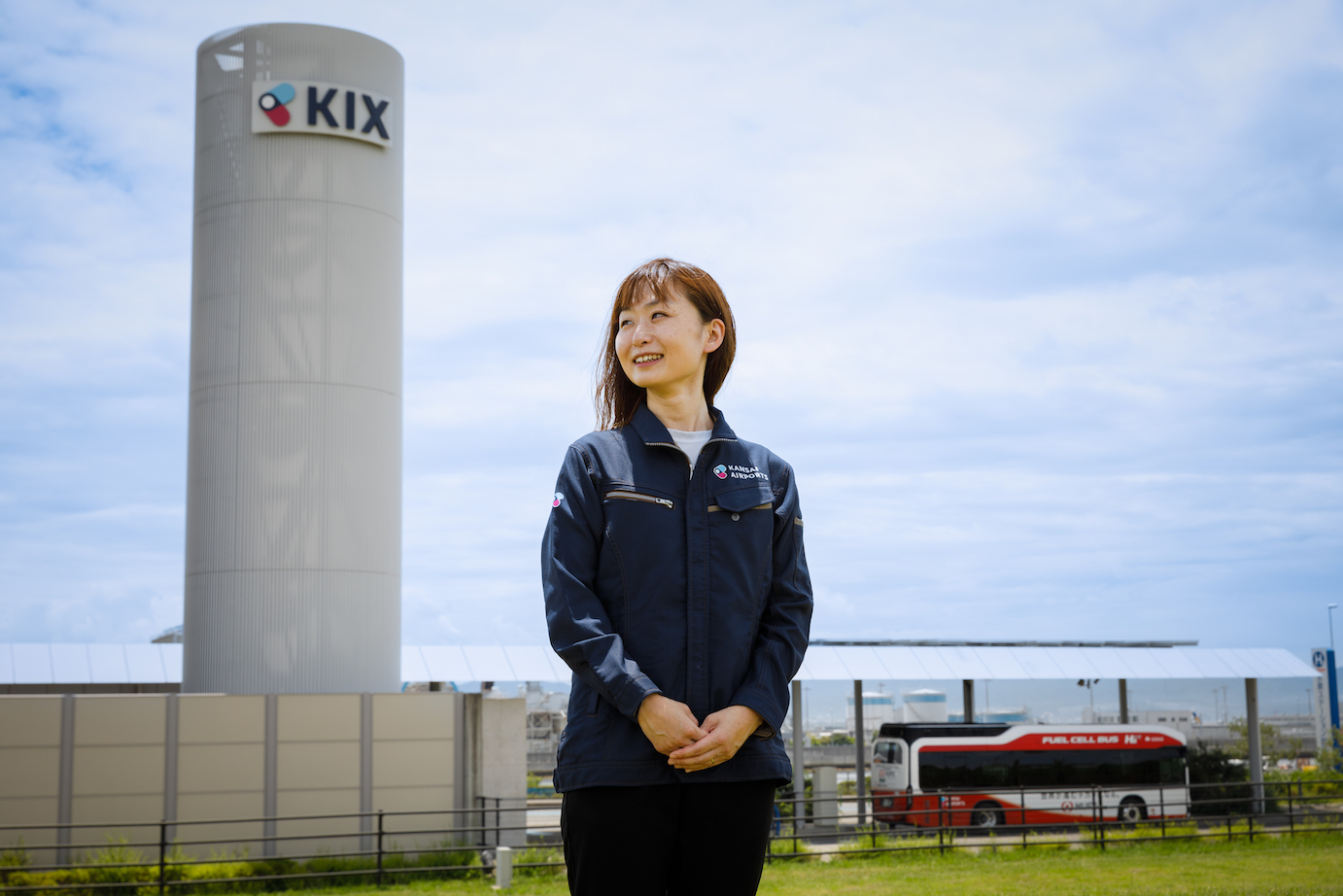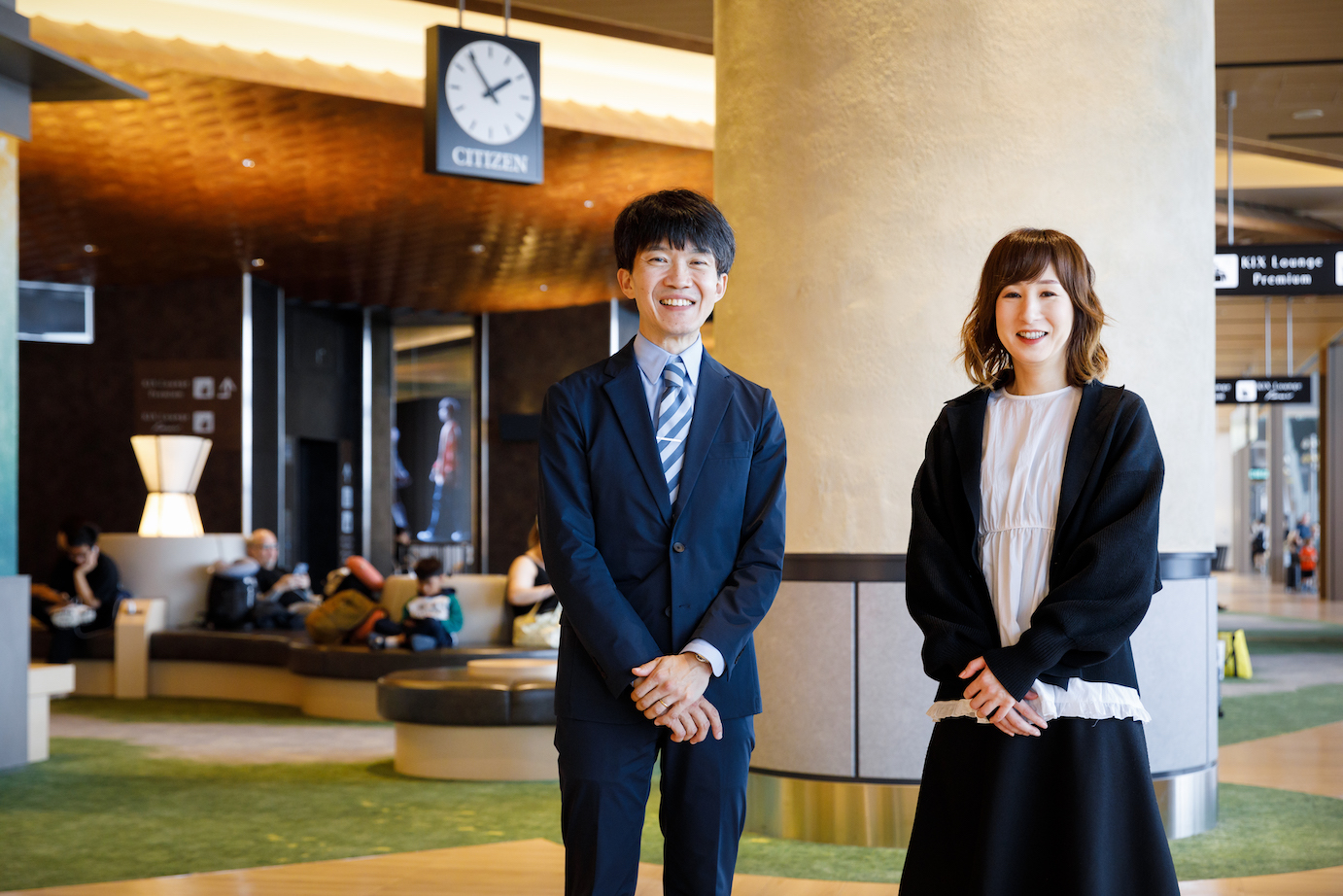- Aspiring to firefighting with airport chemical fire trucks: joining the Airport Fire Brigade
- The difficulties of learning to communicate with the control tower and master firefighting tactics for each aircraft
- Kansai International Airport: a hub for medical care and material transport The significance of and our mission of being at the forefront
- Team members are colleagues who entrust their lives to one another. Airport firefighting is always carried out as a team effort
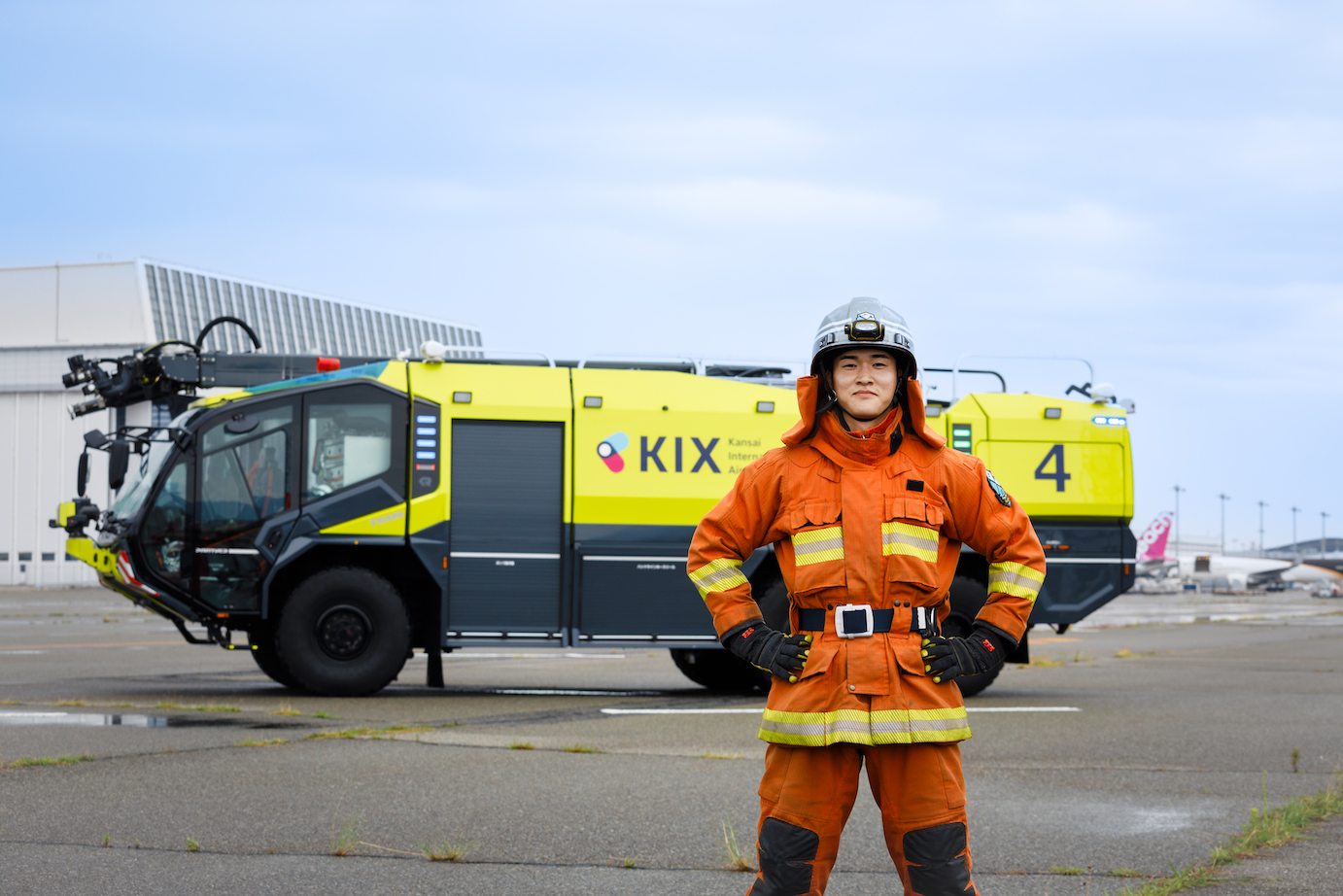
Toc
- Aspiring to firefighting with airport chemical fire trucks: joining the Airport Fire Brigade
- The difficulties of learning to communicate with the control tower and master firefighting tactics for each aircraft
- Kansai International Airport: a hub for medical care and material transport The significance of and our mission of being at the forefront
- Team members are colleagues who entrust their lives to one another. Airport firefighting is always carried out as a team effort
The Airport Fire Department ensures the safety of Kansai International Airport, which welcomes travelers from around the world, around the clock 365 days a year. Their responsibilities extend beyond responding to aircraft accidents and fires (they also cover natural disasters) requiring advanced expertise and specialized training.
We spoke with U, a new recruit who joined the Airport Fire Department out of admiration for their work, to learn about the appeal of the role and the mission that drives it.
-
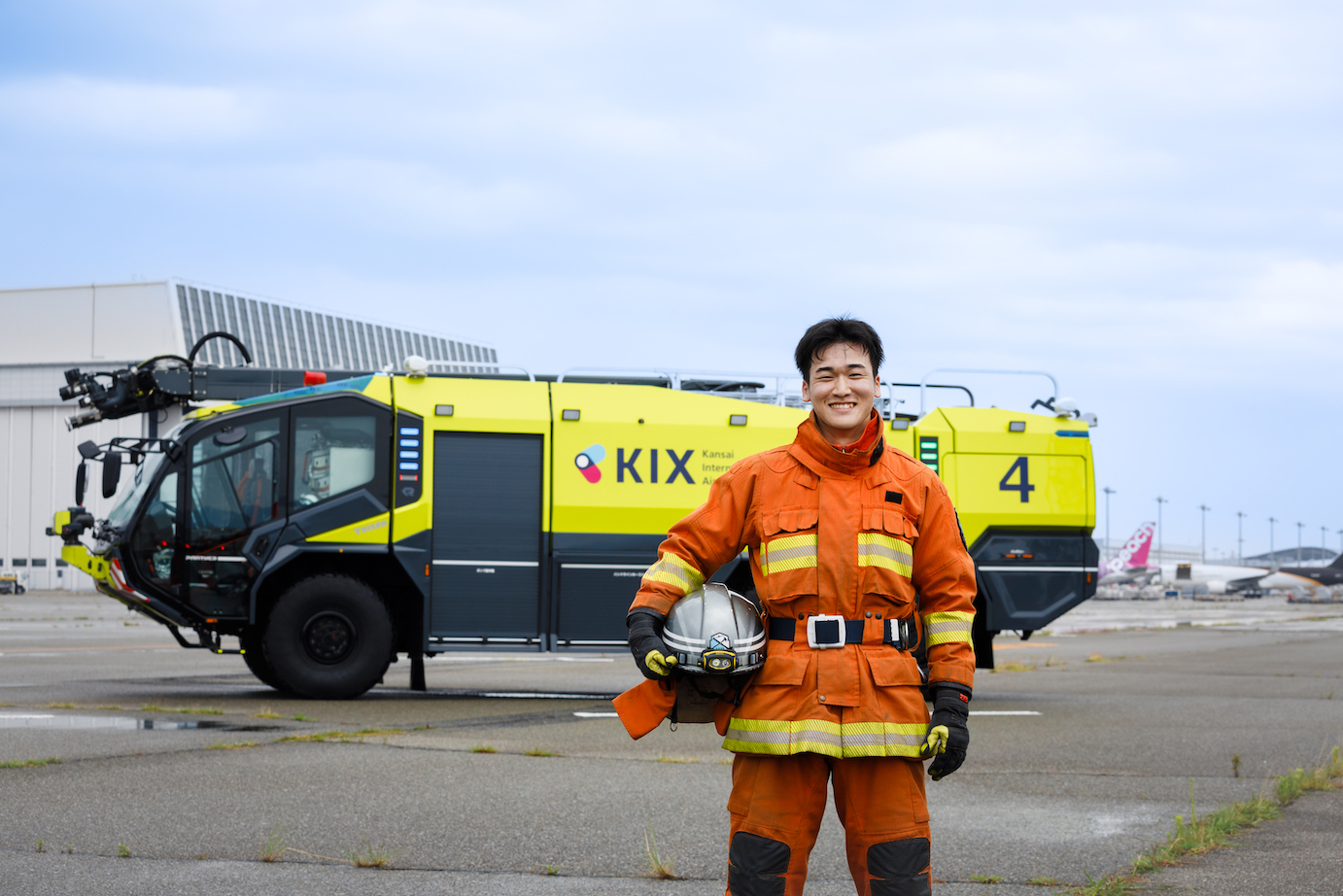
U.T.
Kansai Airports Operation Services KIX Airfield Operations Center (AFOC), 2nd Fire Brigade Rescue Team
U.T. joined the AFOC Fire Brigade Firefighting Team in January 2025. U.T. Has served with the same rescue team since April and is engaged in training and inspection work related to rescue operations.
Aspiring to firefighting with airport chemical fire trucks: joining the Airport Fire Brigade
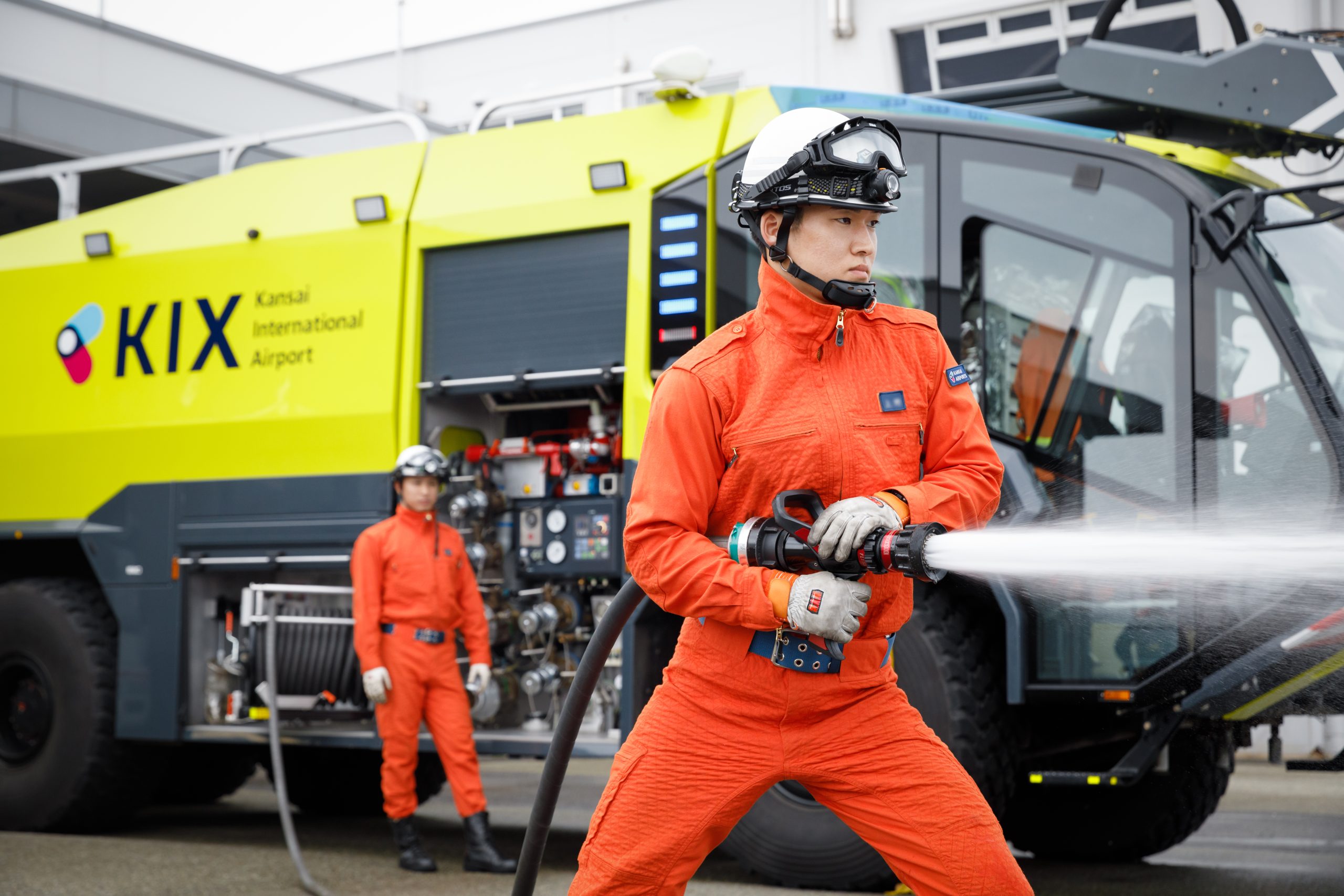
ーーFirst, please talk about the mission of the Kansai International Airport Fire Department.
Our primary mission is to respond to aircraft accidents both within the airport and in the surrounding area, as well as to safeguard airport facilities against disasters. We conduct daily training along with inspection and maintenance activities to ensure the continued safety and security of all who use Kansai International Airport.
ーーWhat are the main differences between the Airport Fire Department and a general municipal fire department?
The biggest difference is that we use airport chemical fire trucks, which are specialized for responding to aircraft emergencies. These vehicles can be controlled from inside the cabin while in motion and spraying water. Since aircraft carry large amounts of fuel, the trucks are equipped to discharge not only water but also substantial quantities of fire-extinguishing agents through multiple nozzles, which set them apart from general fire trucks. They are also significantly larger than standard fire trucks in order to carry the volumes of water and agents required for effective firefighting.
ーーYou mentioned that you are in your first year with the Airport Fire Department. What kind of training are you undergoing?
At present, I am learning from senior colleagues how to operate and drive the airport chemical fire truck, along with rope-based rescue techniques. Driving these vehicles requires a large vehicle license, but even after obtaining the license, one cannot immediately take the wheel. In emergency situations, it is extremely difficult to navigate corners at high speeds while racing to the scene of an incident. Only after undergoing several months of training and successfully passing a series of tests is a firefighter finally permitted to drive the vehicle.
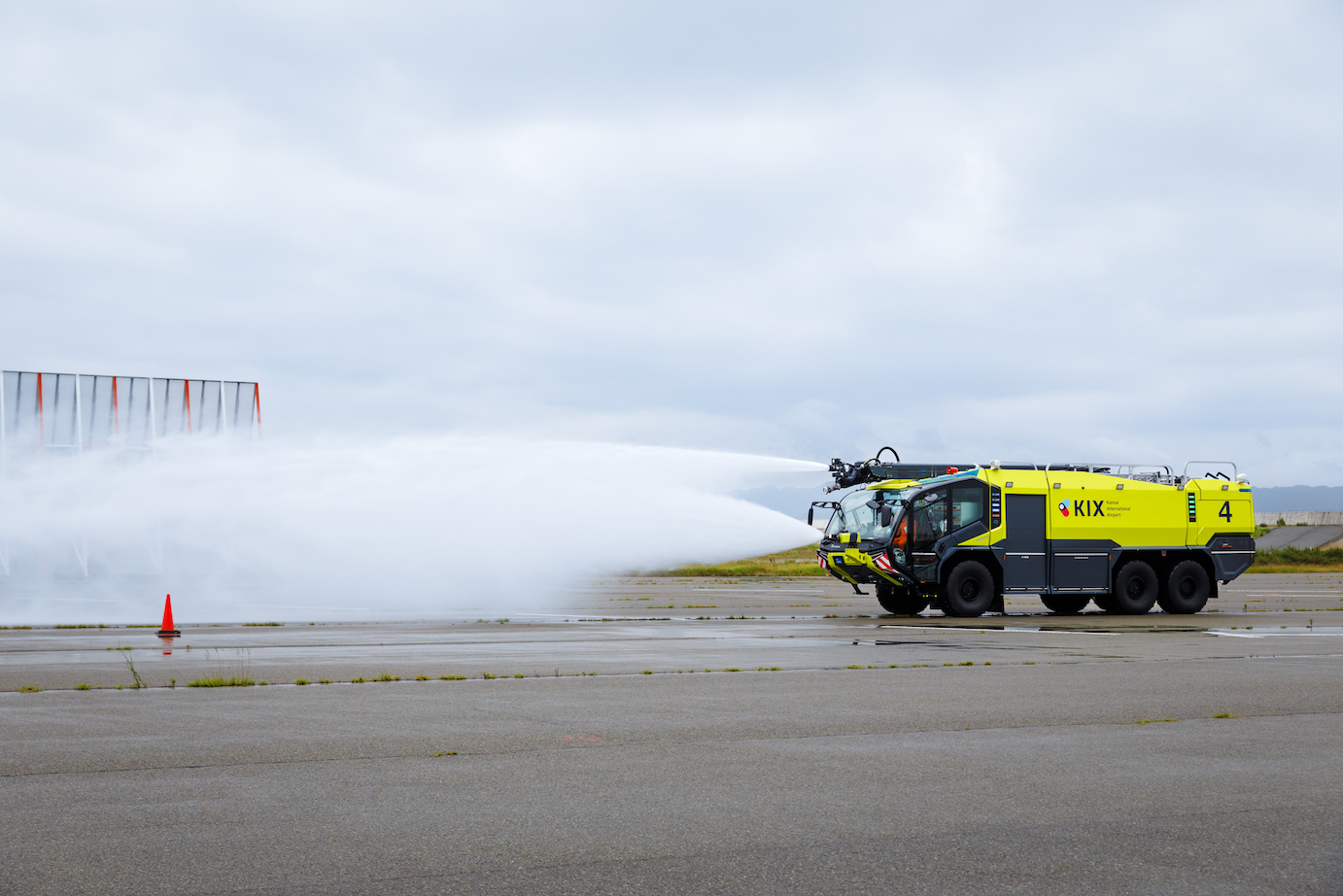
The difficulties of learning to communicate with the control tower and master firefighting tactics for each aircraft
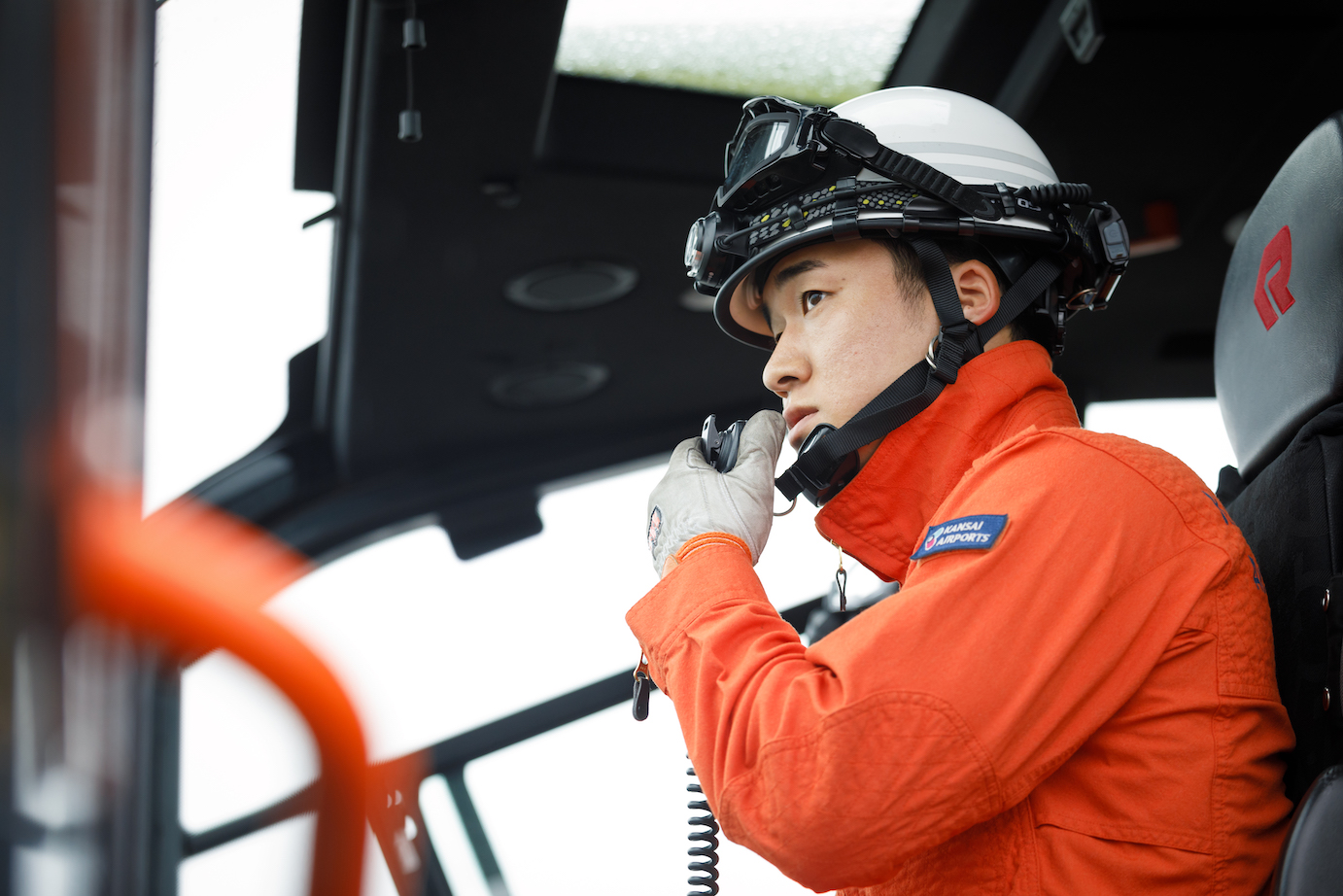
ーーNow, let’s take a closer look at the work of the Airport Fire Department. How long does it take to reach the scene when a fire breaks out at the airport?
Wherever an aircraft fire occurs within the restricted area, fire trucks are required to arrive at the scene within two minutes—and no later than three minutes. Speed is critical. However, fire trucks are not permitted to enter taxiways or runways on their own. No matter how urgent the situation, firefighters must first establish radio communication with the control tower and obtain clearance before moving in to extinguish the fire.
ーーCommunicating with the control tower is also a unique aspect of airport firefighting.
That’s correct. The control tower is constantly engaged in numerous radio communications, but we must ensure that we never interfere with communications from pilots. I found it more difficult than expected to convey information clearly and concisely within a very limited window of time while being mindful of this. I believe the only way to improve is through continuous practice.
ーーHow do you extinguish an aircraft fire?
We use airport chemical fire trucks to discharge water forcefully onto the burning sections of the aircraft to suppress the flames. However, passenger safety is always the highest priority. To protect passengers, it is essential to carry out rapid and effective firefighting operations tailored to the specific structure of the aircraft. Because the location of fuel tanks and doors differs depending on the aircraft type, we must adapt our firefighting tactics accordingly for each model.
ーーSince Kansai International Airport accommodates many different aircraft from around the world, it must be challenging to memorize them all.
That’s correct. I have not yet memorized every model, but I have studied the tactics for the main aircraft types that frequently operate at Kansai International Airport. In addition, we conduct regular training sessions and seminars with airlines and related organizations, ensuring that we continuously share the latest information on aircraft.
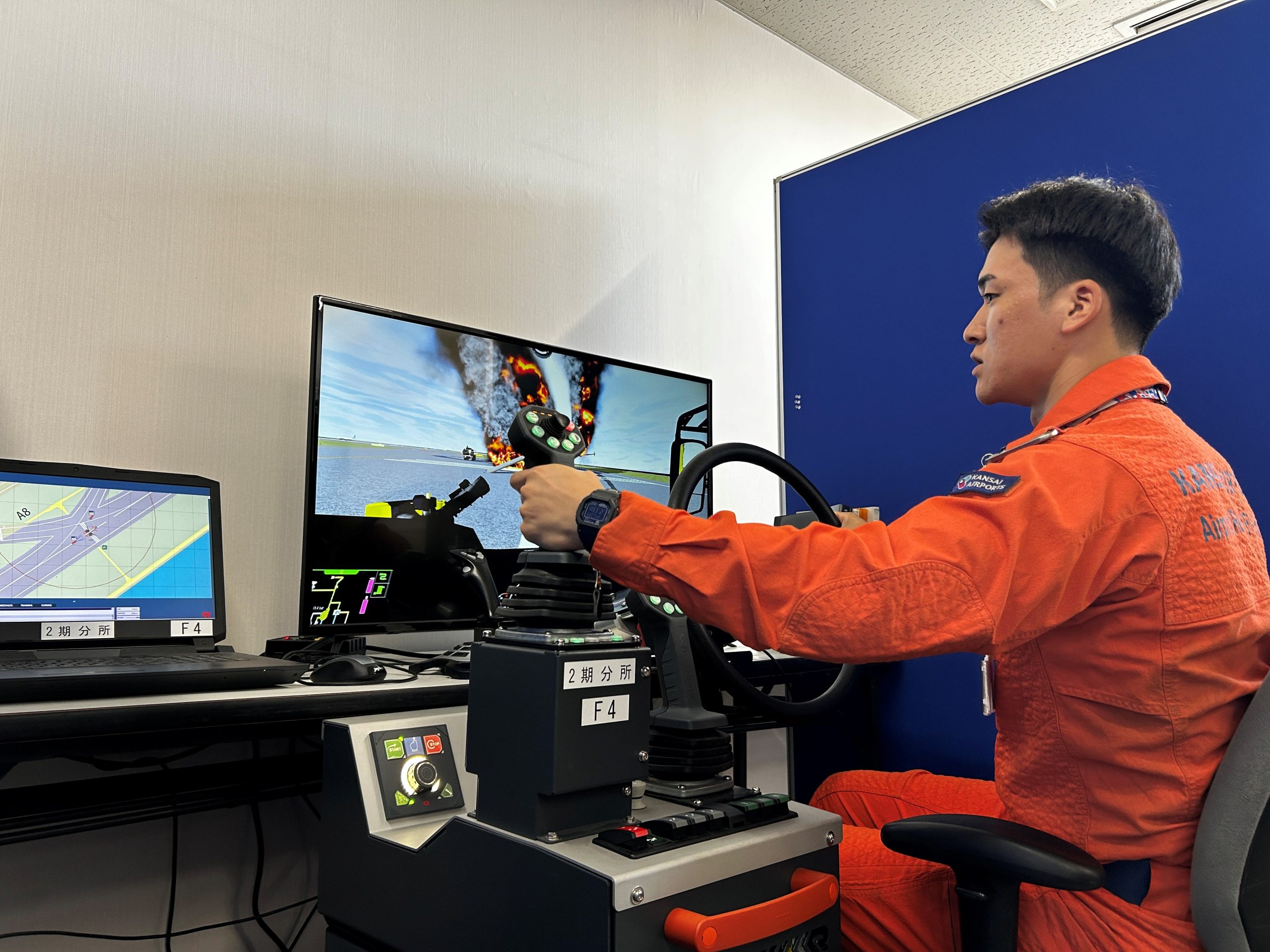
ーーIn addition to training, studying case studies is also an important aspect of the Airport Fire Department’s work.
That is correct. Whenever an aircraft accident occurs, either in Japan or overseas, we immediately share information such as “under what circumstances did it occur, and what were the causes?” and hold meetings to review and discuss the details. We then conduct training as necessary, simulating the scenario of “what would happen if the same situation occurred at Kansai International Airport.” Kansai International Airport is surrounded by the sea, but every airport has its own unique environment. Even if the same type of accident occurs, the outcome may differ depending on the setting. This is why it is critical to study case examples and conduct training as if we were in those actual situations.
Kansai International Airport: a hub for medical care and material transport The significance of and our mission of being at the forefront
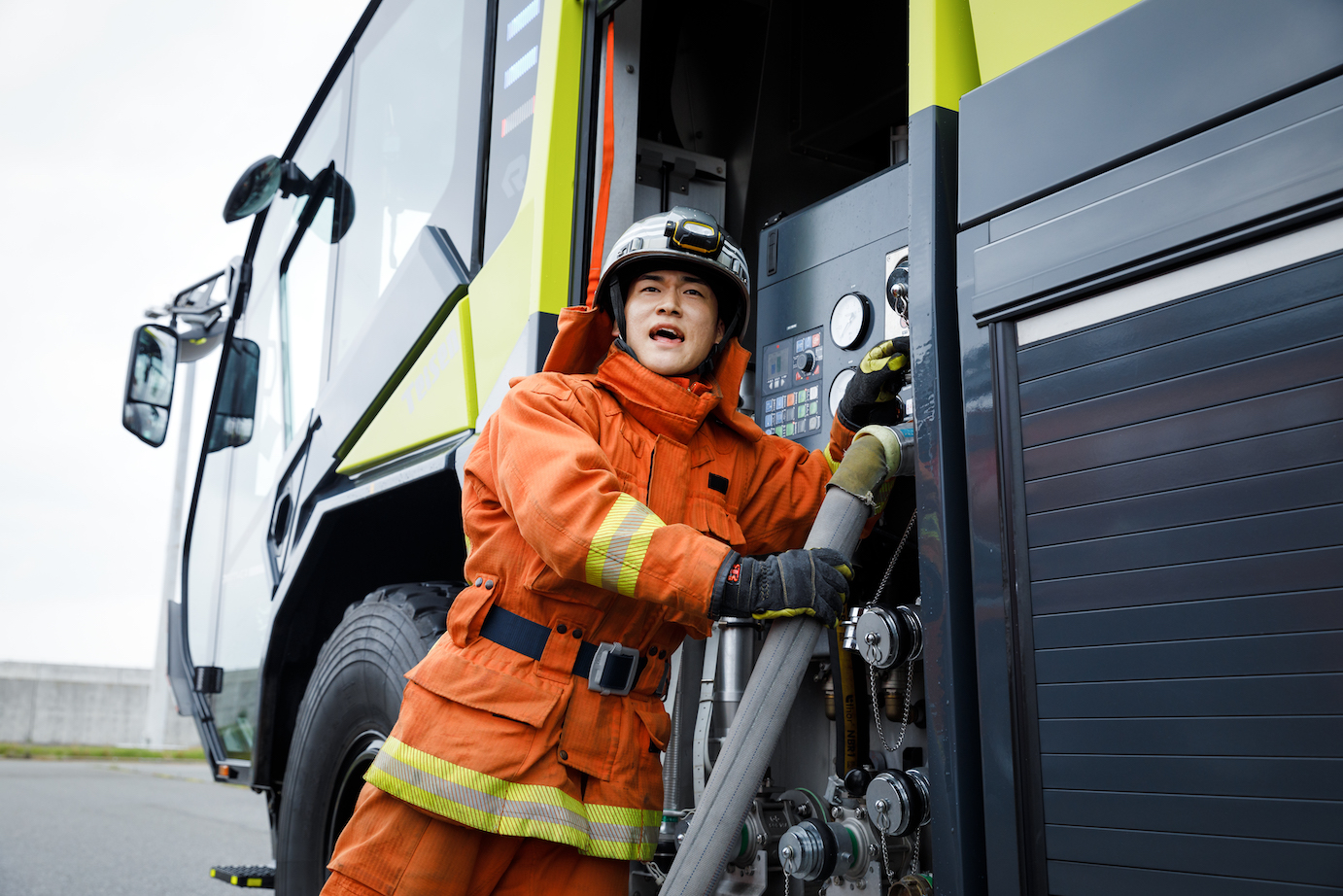
ーーIn addition to responding to fires within the airport, the Airport Fire Department is also responsible for “protecting the safety of the surrounding area.”
Kansai International Airport plays a vital role as infrastructure supporting medical and material transportation. From this standpoint, we believe that the mission of the Airport Fire Department is to safeguard not only the airport itself but also the entire artificial island on which it is located, as well as the surrounding areas. This responsibility gives us a strong sense of purpose, and it is why we approach every training session and inspection with the utmost seriousness.
ーーWhat kind of cooperation do you have with the surrounding communities?
Several times each year, we conduct joint training exercises with fire departments from neighboring municipalities. Outside of these sessions, we maintain close coordination through information exchange whenever necessary. In addition to domestic initiatives, we also take part in training programs at overseas airports. Although I have not yet had the opportunity to participate, my senior colleagues have told me these programs are invaluable opportunities to hear firsthand accounts from the field, study past incidents, and learn practical firefighting methods aligned with international standards. I would very much like to participate if given the chance.
Team members are colleagues who entrust their lives to one another. Airport firefighting is always carried out as a team effort
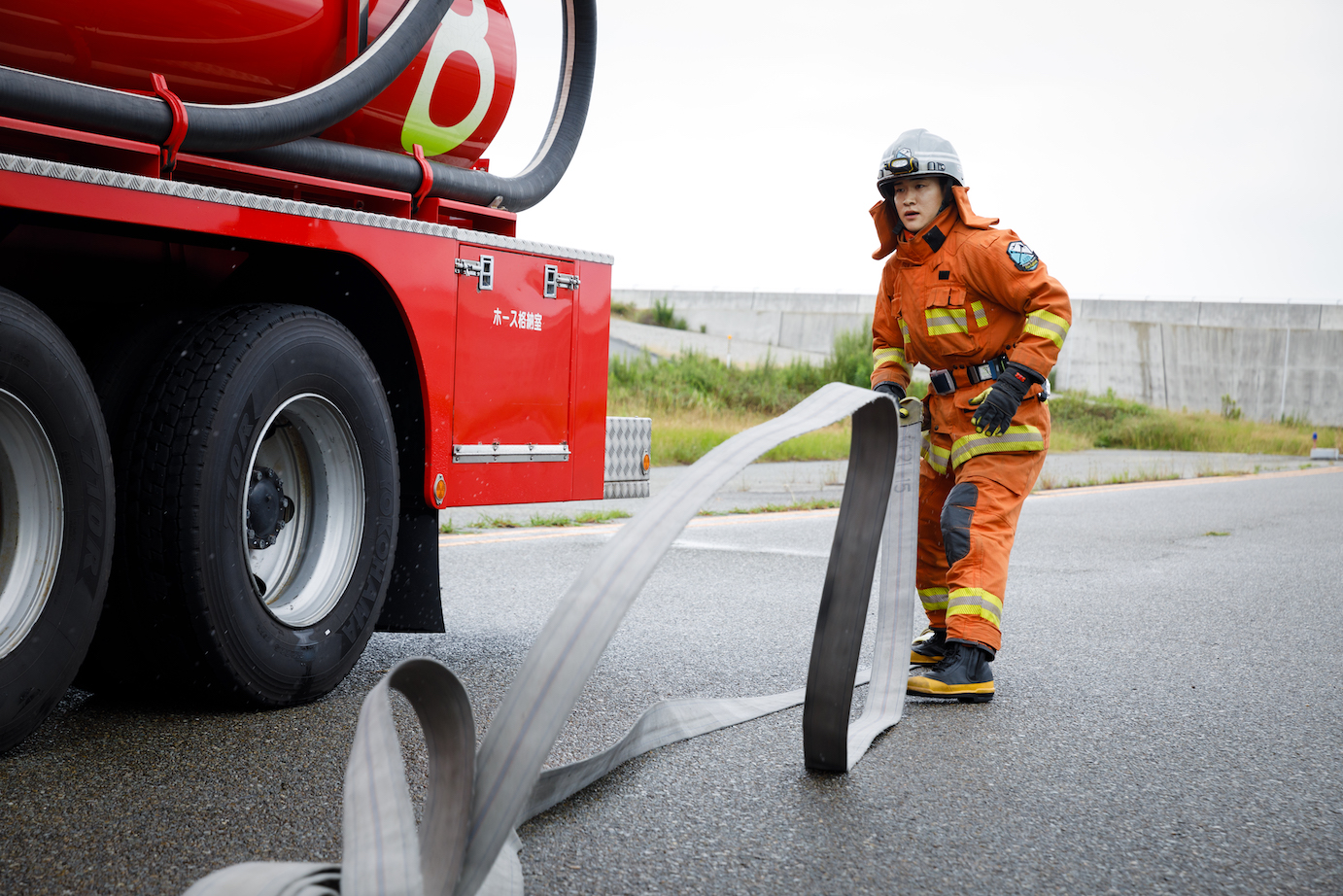
ーーPlease talk about yourself now, U. Why did you decide to join the airport firefighting team?
A close friend of mine is a firefighter, and seeing their work inspired my interest in professions that protect people’s lives from an early age. While in college, I learned about the airport fire department. It is a self-governing organization that requires different skills and judgment from municipal fire departments. I was drawn to the opportunity to acquire knowledge from both airport and municipal firefighting fields, as well as to the unique appeal of operating airport-specific chemical fire trucks.
ーーWhat is it like working as an airport firefighter, a role you once aspired to?
I’ve come to realize it is a profession where teamwork is absolutely essential. I played soccer throughout college, and in soccer, if one player acts selfishly, the team cannot win. The same applies to airport firefighting: if someone acts on their own, it could endanger not only their own life but also the lives of their teammates. My soccer experience taught me the importance of never forgetting that we are part of a team, entrusted with one another’s safety.
ーーSo your student experiences continue to influence your work with the Airport Fire Brigade today.
That’s right. Because there is no margin for error in real emergencies, daily training and practice are critical. We must steadily build up our skills. This similarity between soccer and firefighting may be another important connection. My motto has not changed since my student days: even if I cannot perform perfectly at first, I approach every practice as if it were a real situation and give it my all. My senior colleagues also encourage me by saying, “That’s fine for now,” which motivates me to keep improving step by step.
ーーFinally, could you share your future goals as a member of the Airport Fire Brigade?
I am still one of the younger members now, but in time, juniors will join, and I will eventually take on a teaching role. My goal is to focus fully on training, actively ask questions to resolve uncertainties, and become proficient as quickly as possible so that I can provide reliable guidance to others. I want to grow into someone that juniors can trust, someone they can rely on in difficult situations, and contribute to building the world’s safest Kansai International Airport.

Behind our efforts to aim for greater heights and shape the future are great efforts and wishes of a lot of people supporting the airports.
In “Fly High,” we show you the passion and future vision of people involved with the airports with diverse stories of people working at the airports, those who grew up with the airports, those who love airplanes.


